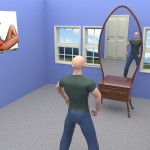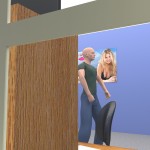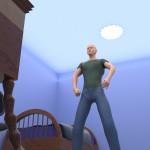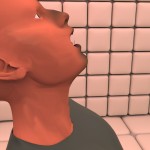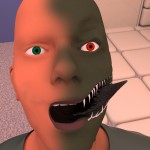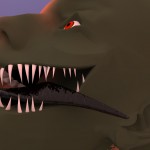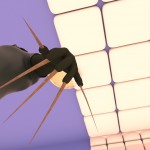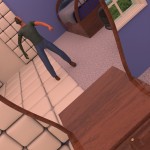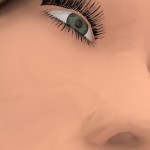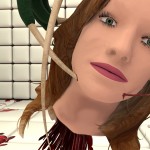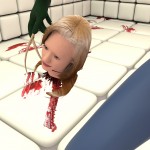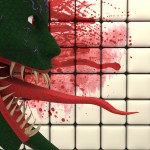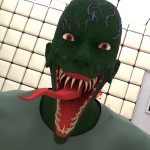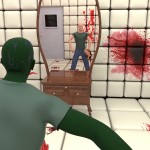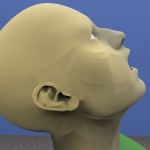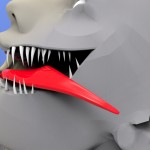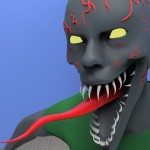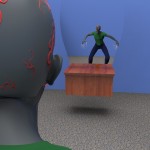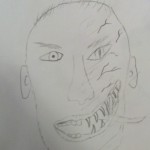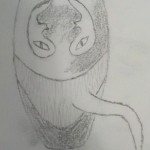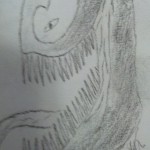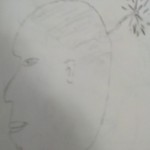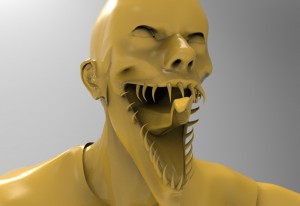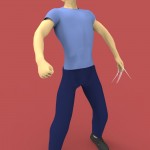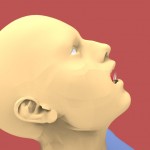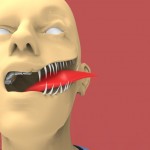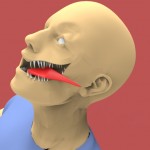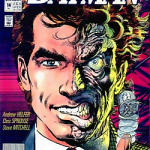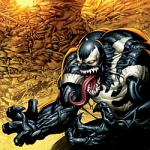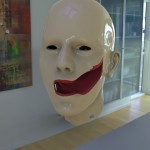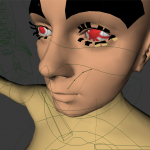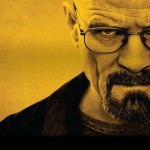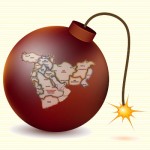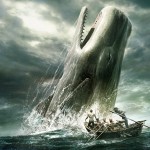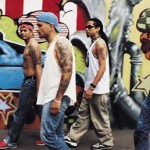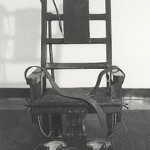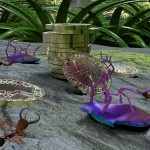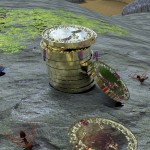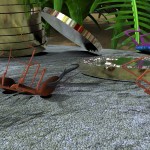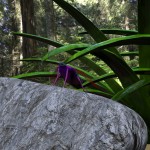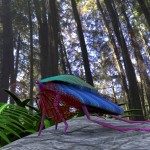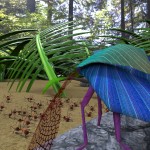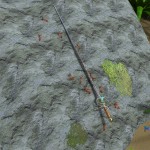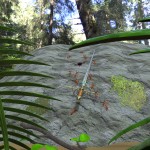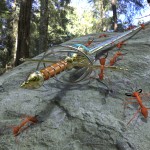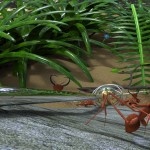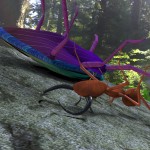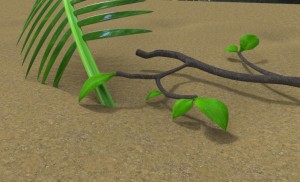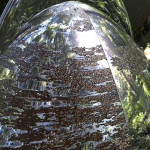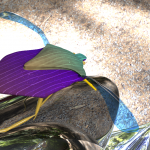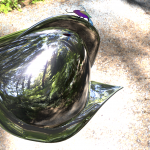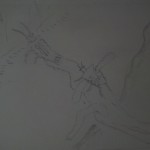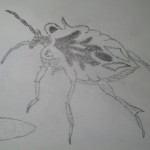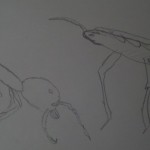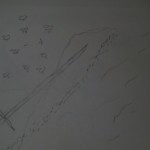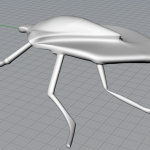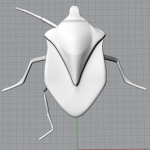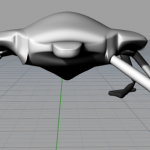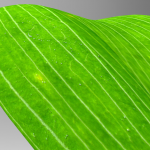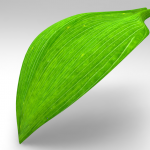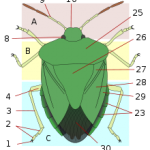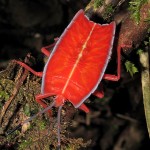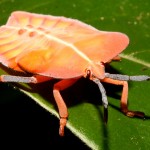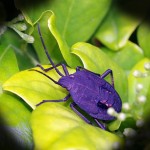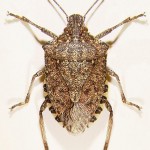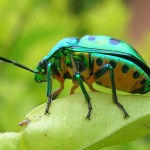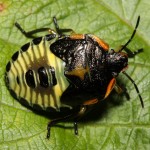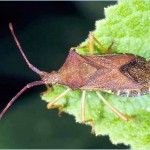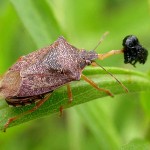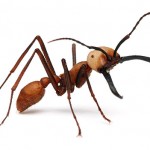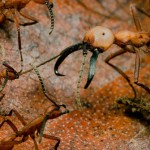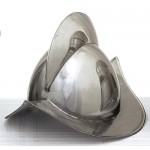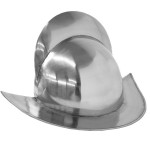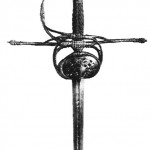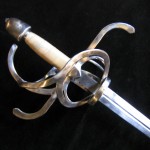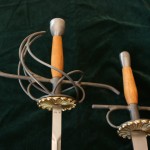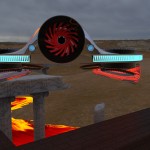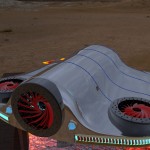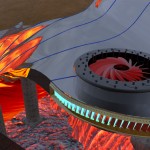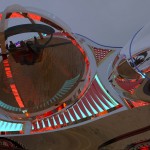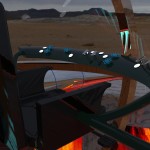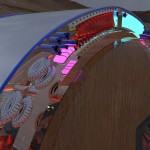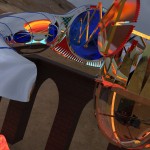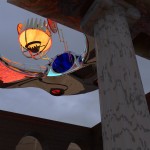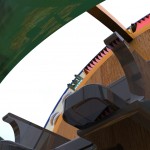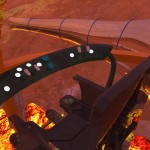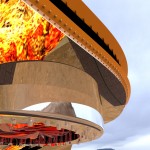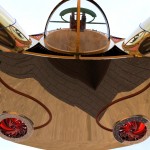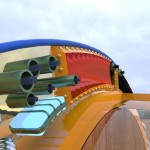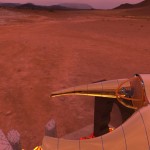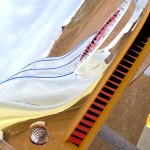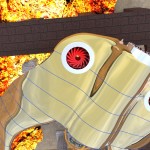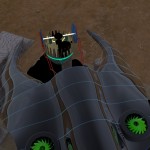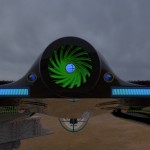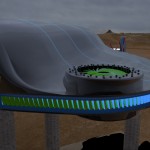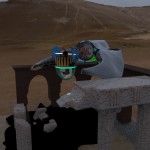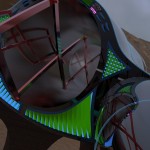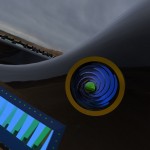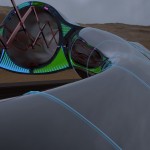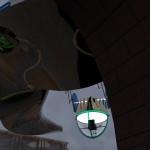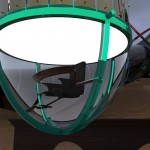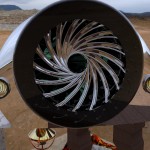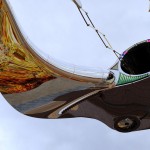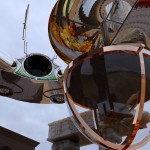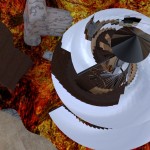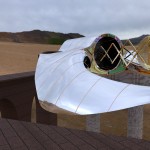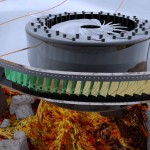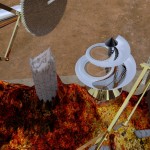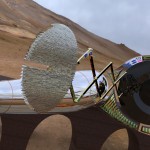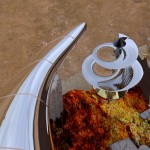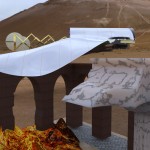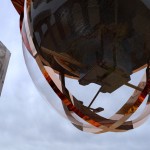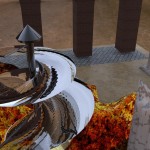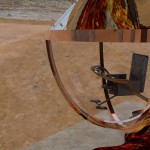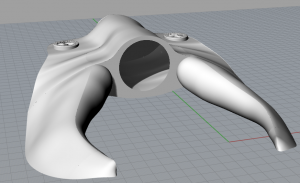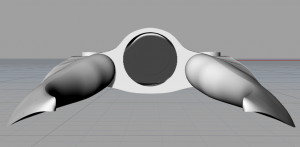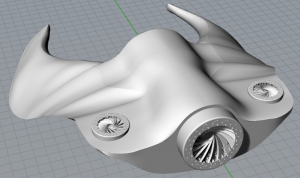Work Title: Anger’s Reflection (3 Scenes)
- Scene 1: The Mirror
- Sweetheart
- Fist
- Short Fuse
- Scene 2: Trouble
- Fangs
- The Claw
- Change of Scenery
- Scene 3: Hello
- Spineless
- Smear
- Dig In
- Senseless
- Playtime
- How do I look?
Note: materials and environments will be different in final product as they are not yet ready. Also, split face model needs to be re-smoothed. The keyshot materials actually look pretty good on the makehuman models so I might just go with those if I run out of time.
- smoothing problems with mesh
Below are the concept sketches for the character (the monster/man with fuse head/transforming man) and the environment (mirror)
This is the tutorial I used to unwrap custom 3D geometry to create UV maps in Blender:
http://wiki.blender.org/index.php/Doc:2.6/Manual/Textures/Mapping/UV/Unwrapping
UV maps can be directly painted on in photoshop to create diffuse (color), specular (reflective), opacity, and bump maps that map very precisely to your object in Keyshot.
You will also need to know how to edit vertices in Blender and some basic photoshop skills (such as working with layers in photoshop). The link I posted links to other tutorials that help with some of the prerequisite skills
These are test renders of the middle scene of 3 scenes. UV mapped textures will be created with blender/photoshop when all geometry is finalized.
- zoomed out
- good side
- middle
- evil side
I am choosing to borrow the strategies of focusing on a dramatic pose found in comic books. I am also taking visual and philosophic inspiration from the comic book characters Two-Face (from Batman) and Venom (from Spiderman).
The visual of image of the face split down the middle with two very contrasting visages is one I will incorporate into my project. Some visual elements from Venom have also inspired my character as well.
Philosophically, Two-Face represents someone who attempts to justify evil actions that serve what he believes is a greater good, blinding himself to the evil of his own actions in the process. Venom represents the idea that an individual’s worst and most terrifying enemy is often himself, and resonates the concept of misusing newfound power.
Image 1:
Work Title: Cover, Batman Annual Vol. 1, No. 14 (1990)
Artist: Neal Adams
Image 2: Artwork for cover of Marvel Comics Thunderbolts Vol. 2 (2007)
Artist: Leinil Yu
- Two-Face
- Venom
In addition to editing the pre-made UV texture maps for makeHuman models I can now create, edit, and apply my own UV texture maps to makeHuman and other models I have modified with T-Splines. In the below image I have demonstrated this by coloring the mouth and skin independently on a custom UV map as a proof of concept. The material comes in to KeyShot as an advanced material, and an additional specular map will be made to eliminate the unwanted skin reflection, but keep wanted reflection as in the eyes. Model exports are .obj
- custom UV map
This really looks weird, but I figured out how to edit custom UV texture maps in photoshop to paint on faces/body features onto a makehuman model. The different color head/body and weird eyes were painted as a proof of concept in photoshop
- Crazy Eyes
I chose the question of why “good people do bad things” and how or if they recognize themselves doing it. I chose this topic because I think it is very important to ethics in the modern world, where the line between right and wrong/good and evil is often blurred. It is also very important to my own life, as a similar idea is something that very often concerns and causes me problems.
In further explanation of the question, an example of what I am talking about is when people use extenuating circumstances as an excuse for actions they wouldn’t normally take. For example, police brutality in the name of revenge against a cop-killer is a common, real world example. Abuses of power, crimes in war, or acts of violence/”evil” in general almost have some kind of justification that could be argued for, especially a public support for revenge. Another essential idea is the notion of a “short fuse”, in which someone becomes angered and destructive without realizing it. Also important is the idea of unknown strength, in which someone does not realize they have as much power or impact on the world and people around them as they think, causing them to inflict unintentional harm or damage.
I am visually inspired by the following tangible things, some of them from fiction:
– Police Brutality
– Torture to prevent terrorism
– The character Walter White from Breaking Bad
– The character Venom from the Spider-man story
– Peer pressure induced bullying
– Literally the idea of a short fuse
– The death penalty
– Moby Dick, consumption by revenge
– The character two-face from Batman
– Gangs
Step 3:
My question/problem/paradox (it is all three) is the question of why “good people do bad things”, and how people struggle with choosing actions that are in line with their own vision or society’s vision of good and evil and recognizing the consequences of those actions introspectively.
- Aftermath
- Blood Money
- Victory?
- Scene 1: Cortes’ arrival to Mexico
- The feathered serpent god?
- Perched
- The new army
- Scene 2: Assault
- From out of the jungle
- Taking up arms
- Scrambling
- Scene 3: Victory?
Here is a quick test of a rust texture using normal and diffuse maps created in photoshop
I am out of time for the night and have taken some screen shots of my progress.
The sketches below show the arrival of cortes on a piece of driftwood, the tlaxcalan (army ant) bowing to cortes, a swarm scene with a rusted rapier sword against a rock, a potential form of Cortes, a destroyed Aztec pyramid with thousands of bug carcasses after the battle:
- Arrival on piece of driftwood to jungle beach
- Potential Cortes form
- Bowing to Cortes
- Swarm, dots are army ants
- Aftermath, Aztec pyramid, dots are dead bodies
I intend to recreate the legend of Spanish Conquistador Hernan Cortes, specifically the siege of Tenochtitlan. Although the siege historically happened, many of the events have been dramatized and exaggerated in the legend, lending larger than life characteristics on the major characters. The story goes that Cortes arrives to the Yucatan Peninsula of Mexico in search of gold and power with a relatively small group of Conquistadors, who posses weapons, immunity to disease, armor, and mobility (horses) that are superior to that of the technology of the native Aztecs and other nations. Cortes’ force is much too small to take over the Aztec’s alone. Rather than rely on brute force he takes advantage of a native prophecy that causes Aztecs and others to believe he is a power feathered serpent god Quetzalcoatl. Using this belief, Cortes tricks some of the natives, the Tlaxcalans, into allying with him. Cortes leads his small army and the enormous army of the Tlaxcalans to destroy the longstanding city of Tenochtitlan and soon the Aztec civilization with a brutal siege, destroying lives, crops and homes of thousands.
I chose this story because I think that the Conquistadors share many traits with the invasive, yet subtle stink bug.
Turning points:
1. Cortes arrival to Mexico and establishment with local allies using his god-persona.
2. The actual siege of Tenochtitlan, a scene of swarming, destruction, and senseless violence.
3. The aftermath of the battle, in which the once great city is destroyed and many members of all parties involved are dead. This scene is the start of centuries of corruption/an important removal of freedom in Mexico.
I intend to emphasize many parts of the story that are now considered to be historically inaccurate, such as the notion that the Tlaxcalans betrayed fellow natives and the idea that Cortes was actually believed to be a god. I intend to change these because I think that these actions lend well to the sneaky qualities of the stink bug and I also believe that they better show the brutality of Spanish conquest, which was very real.
Trying the wings opened and closed in keyshot. The closed wings are asymmetrical to be able to overlap on the back. A test material made in photoshop is applied. need higher res
Stink Bug shown without wings. Leaf model with a high res. leaf texture in keyshot
The stink bug, or pentatomidae are a family of shield bug. They are small beetles with a shield shaped body, with widely varying colors and shapes of both their adult forms and nymphs. They get their name from their ability to secrete a foul smelling, cyanide containing liquid when threatened. This response as, well as their overall resilience, long life, and resistance to pesticides makes them relatively invulnerable to humans and predators. Some stink bugs can live for multiple years even in non-tropical climates.
Culturally, stink bugs are generally hated for their foul odor, tendency to infest human structures and trees, and their tendency to feed on crops as pests. Since they are unaffected by many pesticides they can decimate domesticated crops or garden plants. A minority of cultures consider stink bugs to be beneficial because they are sometimes predators of other beetles. People in Laos eat stink bugs.
I chose stink bugs/ shield bugs because I think they would go well with a story of trickery, infiltration, and invasion because shield bug nymphs often look nothing like their adult forms and sometimes grow up to become ferocious pests or predators. They are also attracted to heat/light, as some humans are attracted to gold. They have also invaded the mid-atlantic United States in the last decade and I have been seeing them nearly every day for years, have a very good notion of their body plan, and I hate them/would enjoy putting them into a story as an antagonist.
Inspired by hovercrafts, spy planes, submersible cockpits, and the design techniques of Leonardo Da Vinci, the Pompeii flyer is a modular vehicle designed for exploration. A flying and hovering vehicle was chosen because it is the best way to stay safe and out of contact from the incredible heat of lava and ash. Specifically, the environment chosen was a volcanic eruption near ancient Pompeii. The vehicle is shown arriving at the scene of an ongoing eruption and navigating lava, ash, and ruins of buildings. The renderings are intended to be viewed in order, as the ship arrives, transitions, and detaches the pod. Leonardo Da Vinci’s scientific nature, gravitation toward nature, and obsession with complex, probably impossible mechanisms inspired the design. For example, the airfoils of the wings are very birdlike, but are reversed from a direction that would actually cause it to fly. Very few of Da Vinci’s inventions would actually function, and several of them are incorporated into the vehicle, including the pod’s screw-like blades.
The Da Vinci inspired lava flyer, shown below arriving at an eruption at Pompeii:
41 renderings.
I recreated what Dana and Phil made by sweeping curves along 2 rails to make a single continuous piece. The bumps on the fuselage are there because I did not create the rails for the fuselage in advance. When I did create rails in advance for the wings the result was much smoother, and redoing the fuselage in this way should fix the problem.
Your name: Glen Williams
Your major: Mechanical Engineering
Please list a few of your interests, sports you play, or other activities you’re involved in (on or off campus).
– Bucknell Varsity Cross Country/ Track and Field teams (long distance running)
– Robotics (in research with Prof. Kim and as a hobby)
Why are you taking this class? What do you most want to get out of it?
I am very interested in 3D design, and wanted to take a class outside of the engineering curriculum. I hope to get exposure to a different perspective of 3D design that I would not normally get.
Are there any particular topics or techniques that you’re hoping to learn about in this class?
– I don’t know very much about art, so I’m hoping to learn more about it.
In your opinion, what makes a work of art interesting, worthwhile, or compelling—to put it simply, what makes a work of art good? Why do you feel this way?
– A work of art that both looks original/appealing and clearly took skill to produce is interesting to me. I feel this way because I can most relate to realistic and precise art, and most respect people who have those skills.
Email address:
gtw008@bucknell.edu
Cell phone number:
484-643-3977
Cell phone service provider:
Verizon
